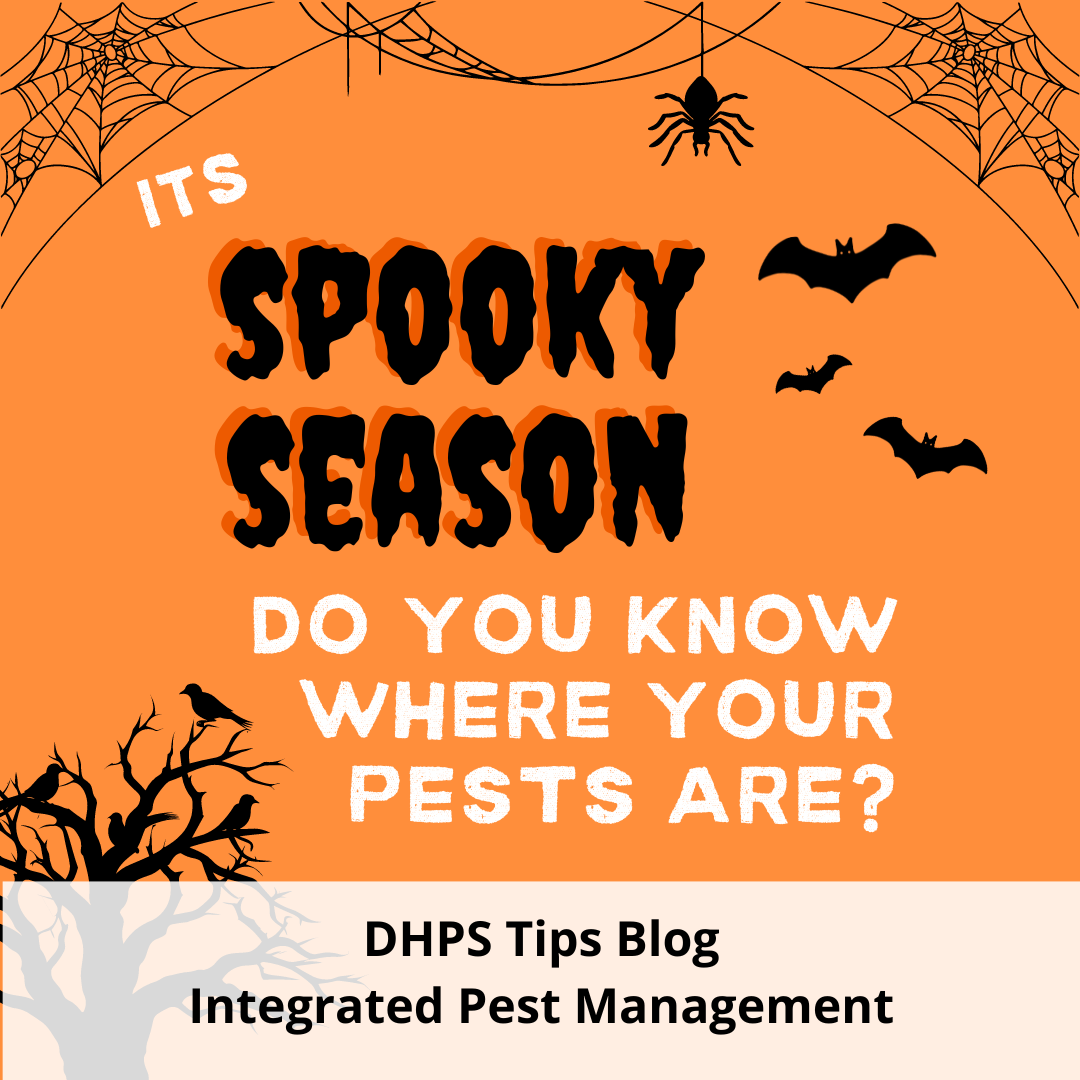
The Joanine Library at the University of Coimbra in Portugal houses almost 60,000 volumes—and a colony of bats that keep harmful insects at bay:
“In the daytime—as scholars lean over historic works and visitors admire the architecture—the bats roost quietly behind the two-story bookshelves. At night, they swoop around the darkened building, eating the beetles and moths that would otherwise do a number on all that old paper and binding glue.” - Atlas Obscura 
As the weather starts to change this spooky season, you might notice more uninvited guests trying to make your institution their home. While bats, like the "honorary librarians" at the Joanine Library, can offer a quirky form of natural pest control, most institutions can’t (and shouldn’t) rely on these nocturnal helpers.
Every institution, large or small, deals with pests at one point or another; especially insects. Though they will never be completely eradicated from your institution, an achievable goal is the management of pests. In the past, this usually meant applying pesticides. For the health of staff and the safety of collections, institutions are moving away from this approach. Instead, they are using preventive measures like updating building structure and storage, improving environmental controls, updating housekeeping procedures, and treating outbreaks by non-chemical means. Using these different measures in combination is known as integrated pest management (IPM). (Unfortunately, bat-led pest control is not a recommended solution!)
Understanding what kinds of pests are in and around collection areas is the first crucial step in solving the problems they cause. Monitoring provides data regarding the base level of pests at an institution, helps to identify active infestations, and can be used to determine the threshold of acceptable activity that is specific to each collection, building, and institution. In addition, concrete data regarding pest activity in specific locations supports requests for preventive measures such as additional door sweeps or new windows.
In general, if you want to see what insect pests may be present, you will want to use a simple “blunder” glue trap. The term “blunder” comes from the fact that you are not using any attractant lure and you will capture whatever insect blunders into the trap. These traps are generally made of paper and lie flat on the ground or shelf. They have a thin glue layer that will trap most insects that wander onto it. Moth and beetle lures can be added to blunder traps to increase their usefulness.
 Traps should be placed in areas where collections are stored and accessed as well as in exhibition spaces. Invertebrates tend to walk along edges, such as walls of rooms so placing the traps along these paths will provide more accurate data. Distribute the location of traps throughout the room, especially on either side of doorways, windows, near drains, and any other entry points you suspect. Also consider placing traps near objects/specimens that are more likely to harbor insects.
Traps should be placed in areas where collections are stored and accessed as well as in exhibition spaces. Invertebrates tend to walk along edges, such as walls of rooms so placing the traps along these paths will provide more accurate data. Distribute the location of traps throughout the room, especially on either side of doorways, windows, near drains, and any other entry points you suspect. Also consider placing traps near objects/specimens that are more likely to harbor insects.
How often traps are monitored depends on collections risks, goals for data analysis, and availability of staff time. Common monitor trap checking schedules are monthly, bimonthly, or quarterly. Click here for more details in MusuemPest.net’s Monitoring section.
Rodents and larger pests are usually easy to name, but identifying insects can be tricky. Proper identification will give you important information about what foods they eat, what environmental and harborage conditions they prefer, how long they live and other key biological clues. Click here to access MusuemPests.net’s Identification section for images, fact sheets, and other resources.
If you have an active infestation, click here for MuseumPest.net’s Treatment section. They stress, “treatment of an active pest infestation without getting to the root cause of the problem is of limited value.” You need to determine the source of an infestation, the reasons it exists, and then address permanent, non-chemical solutions to these problems. This is the basis for integrated pest management.
Whether you have found any pests or not, preventive measures can go a long way to keeping all things creepy/crawly out of your collections spaces. Monitoring is a great first step, and whether you are recovering from an infestation or hoping to avoid one, there are a number of steps you can take. MuseumPest.net’s Prevention section has information about IPM policies and procedures, housekeeping resources, environmental controls, improving your building envelope, and more.
Additional Resources:
Know Your Bugs!
Collection Housekeeping Guide
Integrated Pest Management – Conservation Wiki
Do you have a preservation topic, question, or creative solution you would like us to cover in this series? Reach us by email at info@DHPSNY.org, or connect with us on the DHPSNY Facebook page or DHPSNY Community Facebook Group.